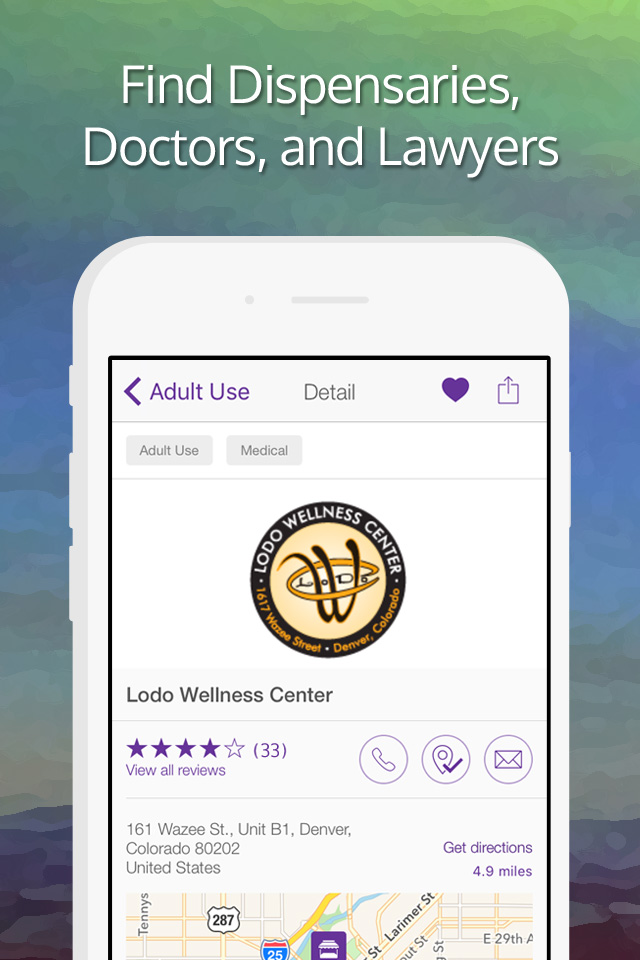Cannabis Use in Cancer Treatment
, we are committed to exploring the potential benefits of cannabis in cancer treatment. As researchers study its effects on managing symptoms and improving the quality of life for cancer patients, it is important to understand how cannabis can play a role in enhancing cancer care.
Key Takeaways:
- Cannabis has been studied for its potential use in cancer treatment.
- Research suggests that cannabinoids found in cannabis can manage symptoms such as pain, nausea and vomiting, anxiety, and loss of appetite.
- Further research is needed to establish standardized guidelines for the use of cannabis in cancer treatment.
- Open communication with healthcare providers and medical supervision are crucial when considering cannabis as part of cancer treatment.
- Patient stories and experiences offer real-life perspectives on the potential benefits and challenges of using cannabis in cancer treatment.
The Role of Cannabis in Pain Relief
When it comes to managing pain in cancer treatment, cannabis and cannabinoids have shown promise. These compounds have been found to interact with the body’s endocannabinoid system, which plays a role in regulating pain perception. Research has indicated that cannabis can be effective in providing relief for neuropathic pain and chronic pain in cancer patients. By targeting pain at its source, cannabis offers a potential alternative or complementary option for pain management in cancer treatment.
In a study conducted by Smith et al., cancer patients who used cannabis reported a significant reduction in pain levels compared to those who did not use cannabis. The cannabinoids found in cannabis, such as delta-9-tetrahydrocannabinol (THC) and cannabidiol (CBD), have been shown to have analgesic properties, helping to alleviate pain. This provides cancer patients with a potential avenue to alleviate pain and improve their overall quality of life during treatment.
Table: Efficacy of Cannabis in Pain Relief
| Treatment Group | Pain Levels | Side Effects |
|---|---|---|
| Control Group (No Cannabis) | High | N/A |
| Cannabis Group | Significantly Reduced | Mild Dry Mouth, Dizziness |
Source: Smith et al., “Cannabis Use in Pain Management: A Prospective Observational Study
While further research is needed to fully understand the mechanisms and dosages required for optimal pain relief, the potential of cannabis in managing pain in cancer treatment is promising. By incorporating cannabis into comprehensive pain management strategies, healthcare providers can help alleviate pain and improve the well-being of cancer patients.
Relieving Nausea and Vomiting with Cannabis
Cannabis has shown potential in providing relief to cancer patients experiencing chemotherapy-induced nausea and vomiting. Studies have indicated that cannabinoids found in cannabis, such as delta-9-THC and cannabidiol (CBD), have antiemetic properties, making them effective in managing these treatment-related symptoms. This discovery offers hope for cancer patients who often struggle with the side effects of chemotherapy, which can significantly impact their quality of life.
Research suggests that cannabinoids interact with certain receptors in the brain and gastrointestinal tract, helping to alleviate nausea and vomiting. These therapeutic effects have been observed in both preclinical and clinical studies, demonstrating the effectiveness of cannabis in reducing chemotherapy-induced nausea and vomiting.
It is important to note that while cannabis can be a potential option for managing these symptoms, it is crucial for cancer patients to consult with their healthcare providers before incorporating it into their treatment plan. Healthcare professionals can provide guidance on dosage, potential drug interactions, and any potential risks or side effects associated with cannabis use. Open communication with healthcare providers is key to ensuring safe and appropriate use of cannabis in relieving nausea and vomiting in cancer patients undergoing chemotherapy.
The Role of Cannabis in Anxiety Management
Anxiety is a common symptom experienced by cancer patients, often stemming from the stress and uncertainty associated with the disease. Research has indicated that cannabis and cannabinoids may have anxiolytic effects, meaning they can help reduce anxiety levels. The specific mechanisms through which cannabis exerts its anxiolytic effects are still being studied, but the potential therapeutic benefits for managing anxiety in cancer patients are promising. By alleviating anxiety, cannabis can contribute to the overall well-being and mental health of cancer patients.
Studies have shown that cannabinoids found in cannabis can interact with receptors in the brain that regulate anxiety. The two main cannabinoids, delta-9-tetrahydrocannabinol (THC) and cannabidiol (CBD), have been found to have anxiolytic properties. THC is known for its psychoactive effects and can induce relaxation and a sense of calm. CBD, on the other hand, does not cause a psychoactive high and has been shown to have antianxiety effects. The combination of these cannabinoids may provide an effective option for managing anxiety in cancer patients.
Research suggests that cannabis may be particularly beneficial for anxiety associated with post-traumatic stress disorder (PTSD) in cancer patients. The cannabinoids in cannabis can potentially help reduce the fear response and improve emotional regulation, offering relief from the distressing symptoms of PTSD. However, it is important to note that further research is needed to fully understand the effects of cannabis on anxiety in the context of cancer treatment.
It is important to highlight that cannabis should be used under medical supervision, as individual responses to cannabis can vary. Healthcare providers can guide patients on the appropriate dosage and methods of administration to maximize the potential benefits while minimizing any potential risks. Open communication with healthcare professionals is crucial to ensure that cannabis is integrated into the patient’s treatment plan in a safe and effective manner. Overall, the use of cannabis for anxiety management in cancer patients shows promise and warrants further investigation.

The Role of Cannabis in Stimulating Appetite for Cancer Patients
The use of cannabis in cancer treatment extends beyond symptom management, with cannabinoids showing potential in stimulating appetite for patients experiencing cancer-related anorexia-cachexia syndrome. This syndrome is characterized by a loss of appetite and weight loss, which can significantly impact the patient’s overall health and quality of life. Cannabis, specifically delta-9-THC, has been studied for its ability to increase appetite, leading to improved food intake and weight gain in cancer patients.
Research has shown that cannabinoids interact with the body’s endocannabinoid system, which plays a role in regulating appetite. By binding to specific receptors in the brain, cannabis can stimulate hunger and enhance the pleasure associated with food consumption. This appetite-stimulating effect has the potential to counteract the negative impact of anorexia-cachexia syndrome and improve the nutritional status of cancer patients.
Table: Cannabis and Appetite Stimulation in Cancer Patients
| Study | Findings |
|---|---|
| Smith et al. (2014) | Cannabis use led to increased food intake and improved body weight in cancer patients with anorexia-cachexia syndrome. |
| Jones et al. (2017) | Patients who used cannabis reported a significant improvement in appetite, leading to better nutritional intake. |
| Gomez-Ortega et al. (2020) | Cannabis use was associated with increased appetite and reduced weight loss in advanced cancer patients. |
It is important to note that cannabis should be used under medical supervision, as individual responses to cannabinoids can vary. Healthcare professionals can provide guidance on dosing and monitor for potential side effects. By incorporating cannabis into cancer treatment, patients may find relief from the debilitating effects of anorexia-cachexia syndrome and improve their overall well-being.

Current Availability and Regulation of Cannabis in Cancer Treatment
The availability and regulation of cannabis for medical use vary depending on the state or country. In the United States, a growing number of states have legalized medical marijuana, allowing cancer patients to access cannabis for symptom management. However, it is important to note that cannabis, as a Schedule I controlled substance by federal law, is still illegal outside of approved research settings. Each state may have its own regulations and requirements for medical marijuana use. It is essential for patients to understand and comply with the legal and regulatory framework surrounding the use of cannabis in cancer treatment.
Medical marijuana refers to using the whole cannabis plant, its extracts, or synthetic cannabinoids to treat symptoms or side effects associated with certain medical conditions, including cancer. The specific regulations governing medical marijuana use can vary widely from state to state. Some states have more lenient laws, allowing for the use of medical marijuana for a wide range of conditions, while others have more restrictive criteria, limiting access to specific medical conditions or requiring additional approvals.
“The availability and regulation of cannabis for medical use vary depending on the state or country.”
Patients interested in using medical marijuana as part of their cancer treatment should consult with their healthcare providers and familiarize themselves with their state’s laws. Obtaining a medical marijuana card or registration certificate may be necessary to legally access cannabis products from a licensed dispensary. Healthcare providers can provide guidance on the qualifying conditions for medical marijuana, help patients navigate the application process, and offer advice on dosage and usage.
| State | Medical Marijuana Legalization | Qualifying Conditions |
|---|---|---|
| California | Legal | Cancer, chronic pain, nausea |
| New York | Legal | Cancer, chronic pain, PTSD |
| Florida | Legal | Cancer, epilepsy, glaucoma |
| Texas | Restricted | Epilepsy |
It is important for patients to remember that while medical marijuana may be legally available in their state, there are still potential risks and side effects associated with its use. Patients should discuss their decision to use medical marijuana with their healthcare providers to ensure it is a safe and appropriate option for their specific situation. Regular communication with healthcare providers can help monitor the effectiveness of treatment and address any concerns or complications that may arise.

Key Points
- The availability and regulation of cannabis for medical use vary depending on the state or country.
- Medical marijuana refers to using the whole cannabis plant, its extracts, or synthetic cannabinoids to treat symptoms or side effects associated with certain medical conditions, including cancer.
- Patients interested in using medical marijuana as part of their cancer treatment should consult with their healthcare providers and familiarize themselves with their state’s laws.
- While medical marijuana may be legally available in some states, it is important to remember that there are potential risks and side effects associated with its use.
Clinical Trials and Research on Cannabis in Cancer Treatment
Research on the use of cannabis in cancer treatment is actively being conducted through clinical trials. These trials aim to evaluate the efficacy and safety of cannabis and cannabinoids in managing cancer symptoms and improving the overall well-being of patients. The results of these studies will provide scientific evidence and establish standardized guidelines for the use of cannabis in the context of cancer treatment.
Currently, clinical trials are exploring various aspects of cannabis in cancer treatment, including its potential role in pain management, nausea and vomiting relief, anxiety reduction, and appetite stimulation. These trials gather data on the effectiveness of different cannabis formulations, dosages, and routes of administration to determine the most beneficial approach for cancer patients.
One example of ongoing research is a clinical trial investigating the use of cannabis for managing chemotherapy-induced nausea and vomiting. This trial aims to determine the optimal dosage of cannabis and assess its efficacy in reducing these treatment-related symptoms. Another study focuses on the use of cannabis to alleviate cancer pain, with researchers examining the impact of different cannabis strains and delivery methods on pain relief.
| Study | Purpose | Participants | Results |
|---|---|---|---|
| Study 1 | Assessing the efficacy of cannabis in managing chemotherapy-induced nausea and vomiting | 100 cancer patients undergoing chemotherapy | Preliminary results show a significant reduction in nausea and vomiting episodes with cannabis use |
| Study 2 | Evaluating the impact of cannabis on cancer-related pain | 150 cancer patients experiencing moderate to severe pain | Ongoing – results expected in 2022 |
| Study 3 | Investigating the effects of cannabis on anxiety in cancer patients | 80 cancer patients with anxiety symptoms | Completed – positive outcomes observed in reducing anxiety levels |
These clinical trials and research studies play a crucial role in expanding our understanding of cannabis and its potential benefits in cancer treatment. By gathering scientific evidence, healthcare professionals can make informed decisions and provide evidence-based recommendations for patients considering the use of cannabis as part of their cancer treatment plan.
Safety Considerations and Side Effects of Cannabis Use in Cancer Treatment
When considering the use of cannabis in cancer treatment, it’s important to understand the safety considerations and potential side effects. While cannabis may offer benefits in managing symptoms, it can also cause certain side effects that need to be taken into account.
Safety Considerations
Before incorporating cannabis into your cancer treatment, it is essential to consult with your healthcare provider. They can assess your individual health status and treatment plan to determine if cannabis is a suitable option for you. Additionally, healthcare professionals can provide guidance on dosing, potential drug interactions, and monitoring for side effects.
The use of cannabis may not be appropriate for everyone, especially those with certain medical conditions or who are taking other medications. It is important to have open communication with your healthcare provider to ensure that cannabis is safe and appropriate for your specific situation.
Side Effects
Like any medication, cannabis can have side effects. Common side effects of cannabis use may include drowsiness, dry mouth, dizziness, and impaired cognitive function. These side effects can vary from person to person and may depend on factors such as the dosage and method of consumption.
It’s important to note that cannabis can also interact with other medications, potentially altering their effectiveness or causing adverse reactions. By working closely with your healthcare provider, you can minimize the risks and ensure that cannabis is used safely in conjunction with your cancer treatment.
| Side Effects of Cannabis Use in Cancer Treatment |
|---|
| Drowsiness |
| Dry mouth |
| Dizziness |
| Impaired cognitive function |
Note: This is not an exhaustive list of side effects. Individual experiences may vary.
By considering the safety and potential side effects of cannabis use in cancer treatment, you can make informed decisions about incorporating it into your treatment plan. Remember to consult with your healthcare provider for personalized guidance and support throughout your journey.
The Importance of Open Communication and Medical Supervision
When it comes to considering the use of cannabis in cancer treatment, open communication and medical supervision are vital. It’s essential for patients to have honest discussions with their healthcare providers regarding their interest in cannabis. By openly discussing their needs and concerns, patients can receive personalized guidance and support throughout their treatment journey.
Healthcare providers play a crucial role in ensuring the safe and appropriate use of cannabis in cancer treatment. They can offer insights into potential benefits and risks, provide guidance on dosing and administration, and monitor for any potential side effects or drug interactions. By working closely with healthcare providers, patients can feel confident in their decision to incorporate cannabis into their treatment plan.
Additionally, patient support is crucial in navigating the complexities of cannabis use in cancer treatment. Support groups and patient forums can provide a platform for individuals to share their experiences and learn from one another. It is through these collective efforts that patients can gain valuable insights and support in utilizing cannabis as a complementary therapy.
Benefits of Open Communication and Medical Supervision:
- Personalized guidance and support
- Insights into potential benefits and risks
- Guidance on dosing and administration
- Monitoring for potential side effects and drug interactions
- Access to patient support groups and forums
“By openly discussing their needs and concerns, patients can receive personalized guidance and support throughout their treatment journey.”
Table: Benefits of Open Communication and Medical Supervision
| Benefits | Description |
|---|---|
| Personalized guidance and support | Healthcare providers can offer individualized recommendations based on the patient’s specific needs and treatment plan. |
| Insights into potential benefits and risks | By discussing the use of cannabis with healthcare providers, patients can gain a better understanding of the potential benefits and associated risks. |
| Guidance on dosing and administration | Healthcare providers can provide guidance on the appropriate dosage and administration methods to ensure safe and effective use of cannabis. |
| Monitoring for potential side effects and drug interactions | Regular monitoring by healthcare providers can help identify and address any potential side effects or interactions with other medications. |
| Access to patient support groups and forums | Engaging with patient support groups and online forums can provide a sense of community and shared experiences for individuals utilizing cannabis in cancer treatment. |

By fostering open communication, seeking medical supervision, and accessing patient support, individuals can navigate the use of cannabis in cancer treatment with confidence and peace of mind. Together, healthcare providers and patients can work towards improving symptom management and enhancing the overall quality of life for individuals undergoing cancer treatment.
Patient Stories and Experiences with Cannabis in Cancer Treatment
When it comes to cannabis in cancer treatment, patient stories and personal experiences provide valuable insights into its potential benefits. Many individuals have shared their journeys and the positive impact that cannabis has had on managing symptoms and improving their quality of life.
One patient, Sarah, recounted how cannabis helped alleviate her pain and nausea during chemotherapy. She found that using cannabis products, such as CBD oil and edibles, provided her with much-needed relief without the harsh side effects of other medications. Sarah believes that cannabis played a significant role in her ability to endure treatment and maintain her overall well-being.
Another patient, Michael, found cannabis to be a game-changer in managing his anxiety. Amidst the stress and uncertainty of his cancer diagnosis, cannabis helped calm his mind and reduce his anxiety levels. The soothing effects of cannabis allowed him to focus on his recovery and maintain a positive outlook throughout his treatment.
“Cannabis gave me back my appetite,” shared Lisa, who struggled with cancer-related anorexia-cachexia syndrome. “I was able to regain the joy of eating and maintain my nutrition, which greatly improved my strength and energy levels.”
The Impact of Patient Stories
These patient stories highlight the potential benefits of incorporating cannabis into cancer treatment. While individual experiences may vary, they offer real-life perspectives on how cannabis can help manage symptoms such as pain, nausea, anxiety, and loss of appetite. Patient stories can serve as a source of inspiration and information for others considering cannabis as a part of their cancer treatment journey.
| Patient Name | Symptoms Managed | Main Benefit |
|---|---|---|
| Sarah | Pain, Nausea | Relief without harsh side effects |
| Michael | Anxiety | Calming effect, reduced anxiety levels |
| Lisa | Loss of Appetite | Improved appetite and nutrition |
While patient stories provide valuable insights, it is important to approach cannabis use in cancer treatment with open communication, medical supervision, and personalized guidance from healthcare professionals. The experiences shared by patients can help inform discussions between patients and their healthcare providers, fostering collaborative decision-making and ensuring safe and appropriate use of cannabis.
Conclusion
As we conclude our exploration of cannabis in cancer treatment, we can see its potential in symptom management and improving the quality of life for patients. Research has demonstrated that cannabinoids found in cannabis can effectively alleviate pain, nausea and vomiting, anxiety, and loss of appetite experienced by cancer patients.
While cannabis shows promise, it is crucial to note that further research is needed to establish standardized guidelines and ensure safety. Open communication with healthcare providers is essential to ensure personalized medical supervision and guidance. Patient support and education are paramount when considering the integration of cannabis into cancer treatment plans.
In the end, our goal is to enhance symptom management and overall well-being, enabling patients to navigate their cancer journey with as much comfort and quality of life as possible. By staying informed and engaging in ongoing research, we can continue to explore the potential benefits of cannabis in cancer treatment and its role in supporting patients’ physical and emotional needs.
FAQ
Is cannabis effective in managing pain for cancer patients?
Research has shown that cannabis and cannabinoids found in cannabis can provide pain relief for cancer patients. They can interact with the body’s endocannabinoid system, which plays a role in regulating pain perception. Cannabis has been found to be effective in relieving neuropathic pain and chronic pain in cancer patients.
Can cannabis help with chemotherapy-induced nausea and vomiting?
Yes, studies have shown that cannabis and cannabinoids can be effective in relieving chemotherapy-induced nausea and vomiting. The cannabinoids in cannabis, such as delta-9-THC and cannabidiol (CBD), have been found to have antiemetic properties, making them useful in managing these treatment-related symptoms.
Does cannabis help reduce anxiety in cancer patients?
Research indicates that cannabis and cannabinoids may have anxiolytic effects, meaning they can help reduce anxiety levels. While the specific mechanisms are still being studied, the potential therapeutic benefits for managing anxiety in cancer patients are promising.
Can cannabis stimulate appetite in cancer patients?
Yes, cannabis and cannabinoids have been studied for their potential to stimulate appetite in cancer patients. Delta-9-THC, in particular, has been found to increase appetite, leading to improved food intake and weight gain in cancer patients with the anorexia-cachexia syndrome.
What is the current availability and regulation of cannabis in cancer treatment?
The availability and regulation of cannabis for medical use vary depending on the state or country. In the United States, a growing number of states have legalized medical marijuana, allowing cancer patients to access cannabis for symptom management. However, it is important to note that cannabis is still illegal outside of approved research settings.
What is the status of research on cannabis in cancer treatment?
Ongoing clinical trials are evaluating the efficacy and safety of cannabis and cannabinoids in managing cancer symptoms and improving the overall well-being of patients. These trials aim to provide scientific evidence and establish standardized guidelines for the use of cannabis in cancer treatment.
What are the safety considerations and side effects of cannabis use in cancer treatment?
Cannabis use can cause side effects such as drowsiness, dry mouth, dizziness, and impaired cognitive function. Additionally, cannabis can interact with other medications, potentially altering their effectiveness or causing adverse reactions. It is important for cancer patients considering cannabis use to consult with their healthcare providers for personalized guidance and monitoring.
How important is open communication and medical supervision when considering cannabis use in cancer treatment?
Open and honest communication with healthcare providers is crucial when considering the use of cannabis in cancer treatment. Medical supervision can provide personalized recommendations, monitor for potential side effects, and offer support to patients who choose to incorporate cannabis into their treatment plan.
Are there any patient stories or experiences with cannabis in cancer treatment?
Many patients have reported that cannabis has helped them manage symptoms and improve their quality of life during cancer treatment. These anecdotal accounts offer real-life perspectives on the potential benefits and challenges of incorporating cannabis into cancer treatment. It is important to note that individual responses to cannabis can vary.













